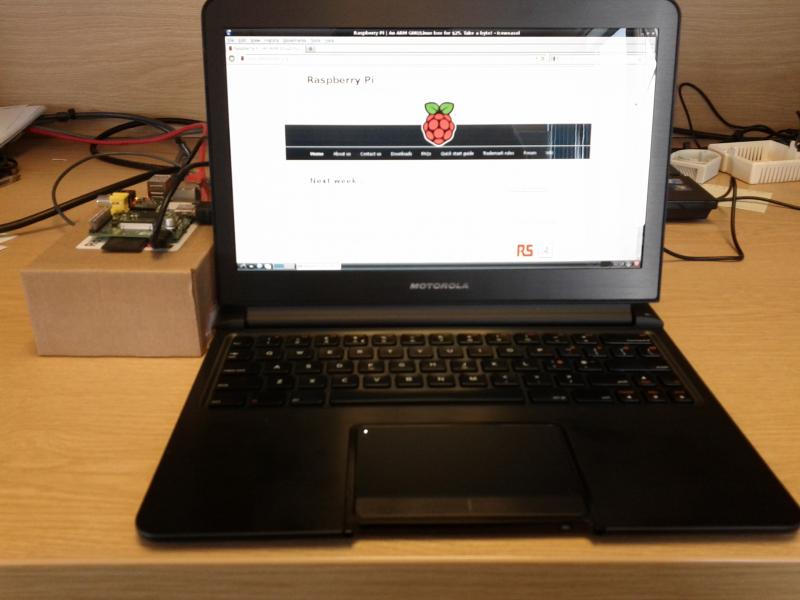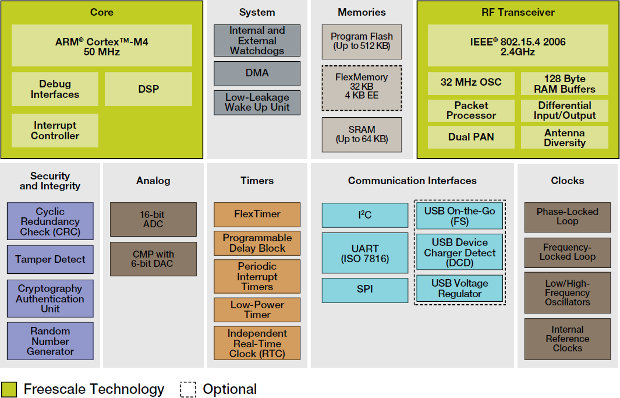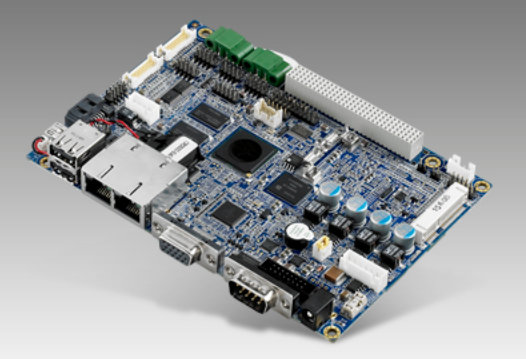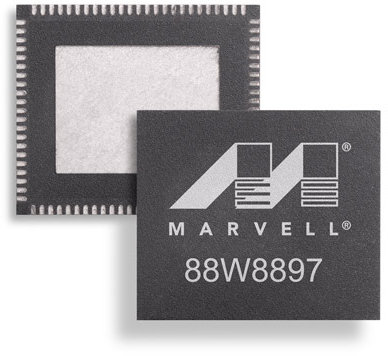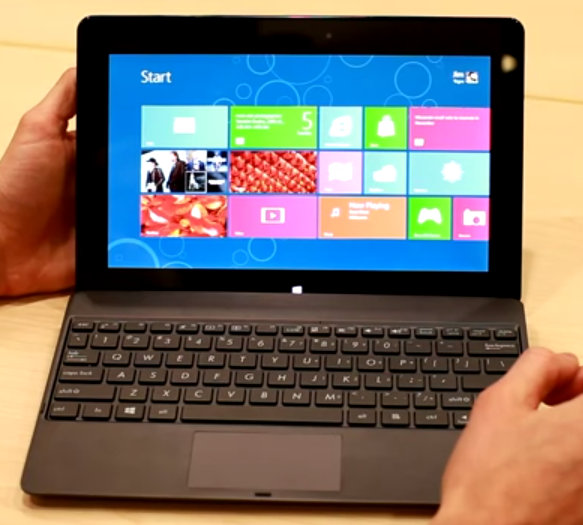There is a very interested thread over the Raspberry Pi forums started by user veryevil where he explains how he built a Raspberry Pi laptop based on Motorola Lapdock (normally used with Motorola Atrix smartphone). This is actually a real hack, because the Raspberry Pi still have to sit outside and you need to make custom cables. But the result still looks great, and veryevil claims the system runs Linux smoothly with a resolution of 1366×768 and the battery can last for hours. Some other users have joined the party, and improved on the design with shorter cables. You can check that forum post for detailed pictures of each cables. Motorola Lapdock used to be an expensive piece of equipment, but Raspberry Pi users indicated it’s currently discounted to 69.98 GBP on Amazon UK and I found it for 81 USD on Amazon US (AT&T Version) which makes it somewhat […]
Mitac Unveils ARM Based GFX Server at Computex 2012
MiTAC International announced their first ARM server (MiTAC GFX) based on Marvell ARMADA XP SoC and running Ubuntu 12.04 LTS at Computex 2012, in Taipei. This solution appears to be similar to Dell “Copper” ARM server announced last week, which also uses Marvel ARMADA XP and runs Ubuntu 12.04, except its intended to be a real product rather than just a prototype. The MiTAC GFX with ASX-1 module is intended for deployment as a general purpose server where real estate, efficiency and throughput at a realistic price are key factors and typical applications include web hosting, web browsing, email, chat, social media and networking, etc. Later, MiTAC will introduce an ASX-HP (High Performance) module for compute intensive workloads that can be add to GFX system, and ASX modules featuring 64-bit SoC are under development. MiTAC showcased a GFX System with 64 nodes (that’s 256 Cortex A9 cores) at Computex 2012, […]
How To Let Sudo Insult You When You Type the Wrong Password
This is a completely useless post, but it’s possible to configure sudo to return insults instead of the default error message when you type the wrong password. To enable this feature, edit /etc/sudoers (with visudo for example) and change the line:
|
1 |
Defaults env_reset |
to :
|
1 |
Defaults env_reset,insults |
Open a terminal windows as a normal user, type a command with sudo and input the wrong password. Here are a few examples: $ sudo bash [sudo] password for testman: xxx Are you on drugs? [sudo] password for testman: xxx Maybe if you used more than just two fingers… [sudo] password for testman: xxx Listen, burrito brains, I don’t have time to listen to this trash. [sudo] password for testman: xxx You silly, twisted boy you. [sudo] password for testman: xxx What, what, what, what, what, what, what, what, what, what? [sudo] password for testman: xxx You do that again and see what happens… [sudo] […]
Freescale Announces Kinetis KW20 Cortex M4 MCU with Built-in Zigbee Transceiver
Freescale announced the addition of the Kinetis KW20 to its Kinetis microcontroller portfolio. The Kinetis KW20 is based on ARMCortex-M4 core and MC13242 RF transceiver to deliver a single chip Zigbee solution for the Internet of Things and power applications such as smart energy, smart metering and building control. The company explains that their new wireless MCU family aims to “address the increased processing and memory requirements associated with future ZigBee Smart Energy 2.0 and Internet Protocol specifications”. The KW20 supports dual personal area network (PAN) to enable a single device to communicate wirelessly on two ZigBee networks. This feature eliminates the need for multiple radios required to connect different home automation and smart energy networks. Kinetis KW20 wireless MCU features: ARM Cortex-M4 processor core Up to 512 KB of flash memory and 64 KB of RAM Cryptology accelerator and sophisticated tamper detect Integrated IEEE 802.15.4-compliant radio (MC13242 RF transceiver) Low […]
Advantech RSB-4210: Freescale i.MX53 Single Board Computer
Advantech has just launched the RSB-4210, a fanless and heatsink-less RISC Single Board (RSB) powered by Freescale i.MX53 (Cortex A8) with 512 MB DDR3 and 2 GB NAND Flash. This board can operate in industrial temperature range (-40 to 85° C) and targets industrial control, digital signage, HMI/kiosk, medical, and portable applications. Here are the key features of this board: Freescale ARMCortex-A8 i.MX536 @ 800MHz Supports OpenGL ES 2.0 and OpenVG 1.1 hardware accelerators Supports full HD 1080p video decode and HD 720p hardware video encode Video Output LCD support with resolution up to 1920×1080 (default 800×480) via LVDS connector HDMI VGA Touch, UART, I2C, I2S, SPI, GPIO, USB Supports SATA storage interface and CAN-bus for vehicle applications Dimensions – 146 x 102 x 20 mm Power – 9 ~ 24 V DC with 3-watt power consumption Operating temperature – -40 ~ 85° C If you don’t mind about the […]
Texas Instruments Unveils Wi-Fi CERTIFIED Miracast Video Streaming Solution Based on OMAP 4
In my previous post, I wrote about Marvell announcement of its new 802.11ac chipset (Avastar 88W8897) that will be Wi-Fi CERTIFIED Miracast. But it’s not the only company for such solution, as Texas Instruments has also announced the availability of a complete solution for mobile devices designed to support Wi-Fi CERTIFIED Miracast, based on the Wi-Fi Alliance Wi-Fi Display Specification that enables users to reliably display high definition content from a mobile device onto a larger screen over a secure, low-latency, wireless network connection. The Miracast certification program defines a standards-based solution for streaming video and audio content over a peer-to-peer Wi-Fi Direct wireless network. TI solutions will leverage OMAP processors and its WiLink connectivity solutions to provide a Miracast platform. This new solution will be available later this year to power mobile phones, tablets, HDTVs, projectors and audio receivers. Texas Instruments solution will provide the hardware and software resources […]
Marvell Avastar 88W8897: Wifi 802.11ac, NFC and Bluetooth 4.0 Chip
Marvell has announced the Avastar 88W8897, a low-power radio chip supporting 802.11ac, near field communication (NFC) and Bluetooth 4.0, aimed at mobile and HD multimedia devices such as ultrabooks, tablets, gaming consoles and smart TVs. Marvell claims the 88W8897 SoC enables a rest of bill of materials (RBOM) footprint reduction of 40-to-50 percent and cost reduction of 75 percent compared to previous wireless solutions. Key features of Marvell Avastar 88W8897 chip include: Wi-Fi 802.11ac – This standard increases bandwidth available over the Wi-Fi link (theoretically up to 1 Gb/s) with throughput up to 867 Mbps for the 88W8897. This kind of throughput allows reliable high-definition (HD) video streaming, tunneled direct link setup (TDLS) and high-speed wireless backup and sync for mobile devices. NFC – NFC allows consumers to pay for items with the tap of a phone via mobile commerce and point-of-sale (e-wallet) applications. It can also enable one-tap pairing […]
ASUS Windows RT Tablet 600: The First Ever Windows 8 Tablet Is Powered By Nvidia Tegra 3
Nvidia announced on its blog that ASUS unveiled a Windows RT (previously known as Windows 8 on ARM) tablet powered by Nvidia Tegra 3 and featuring a 10.1-inch touch screen display. This is a convertible tablet with an optional keyboard dock, so it’s like a transformer with Windows 8. The Asus 600 is said to have the following specifications: Nvidia Tegra 3 (Quad Core Cortex A9) 2 GB RAM 10.1-inch Super IPS+ display (Resolution 1366 x 768) 8MP rear camera with an LED flash 2MP front camera. WiFi and Bluetooth 4.0 connectivity GPS support Gyroscope, compass and NFC. You can watch the hands-on video below provided by Nvidia. ASUS didn’t disclose pricing or availability. Jean-Luc Aufranc (CNXSoft)Jean-Luc started CNX Software in 2010 as a part-time endeavor, before quitting his job as a software engineering manager, and starting to write daily news, and reviews full time later in 2011. www.cnx-software.com


